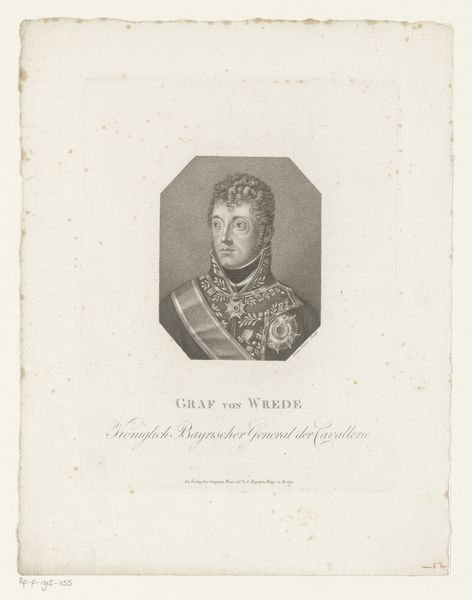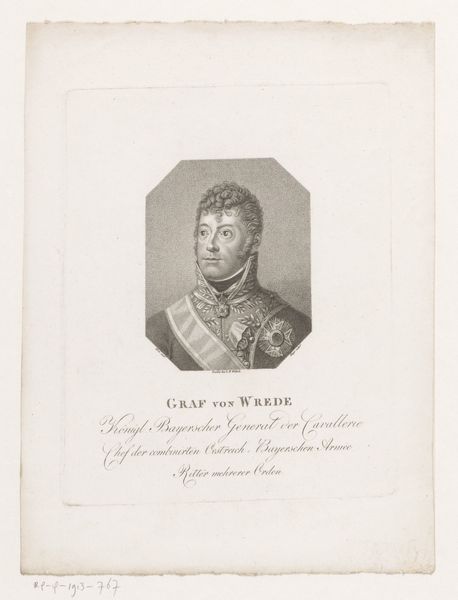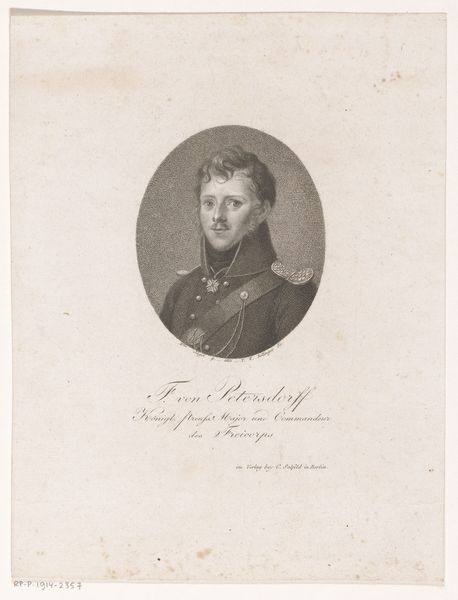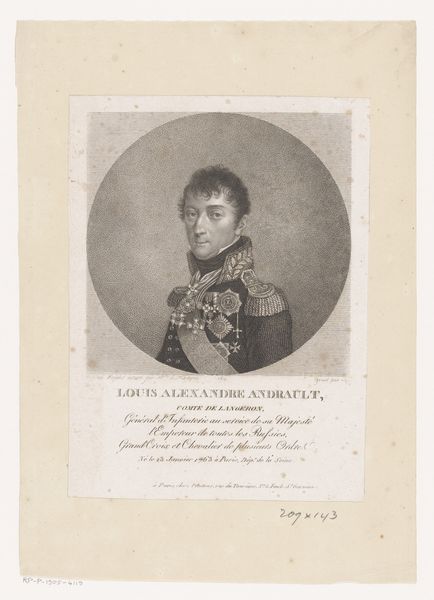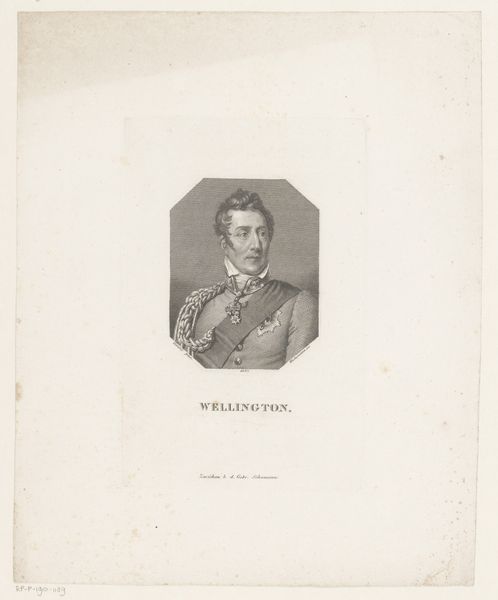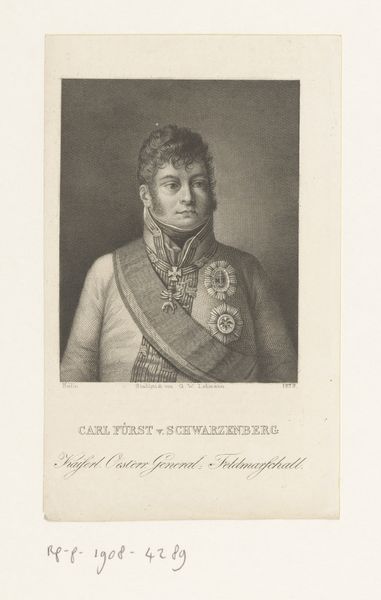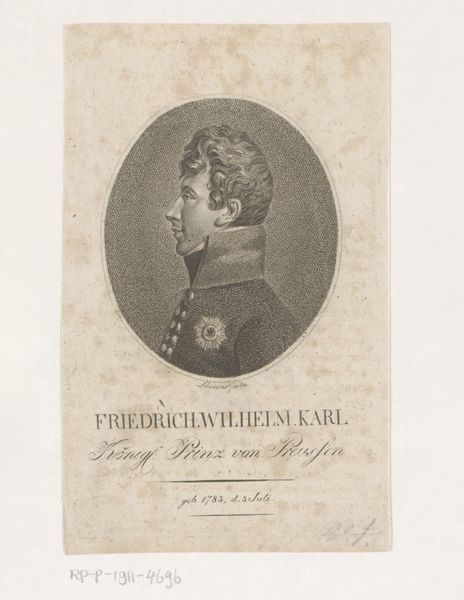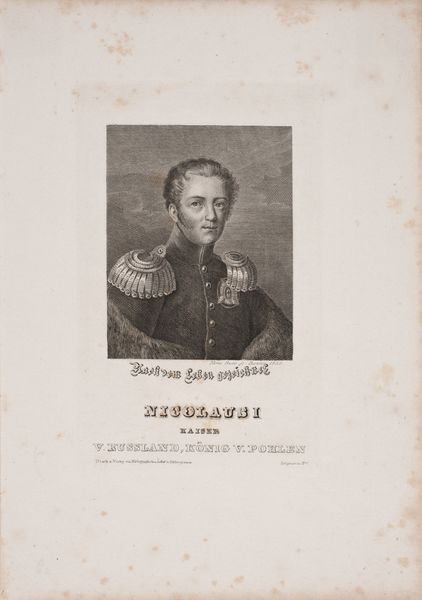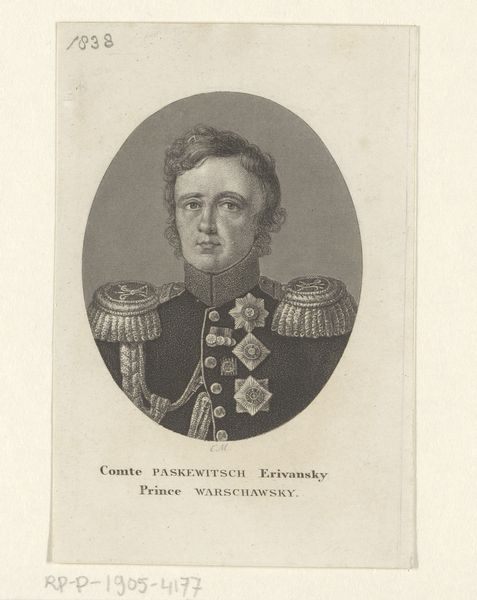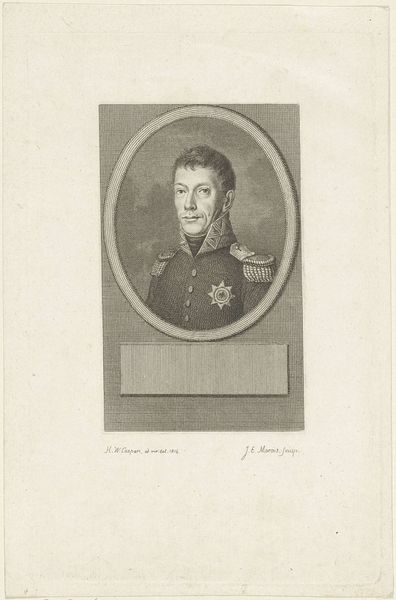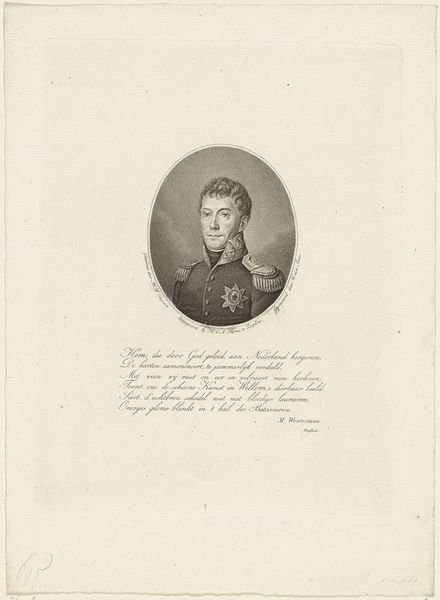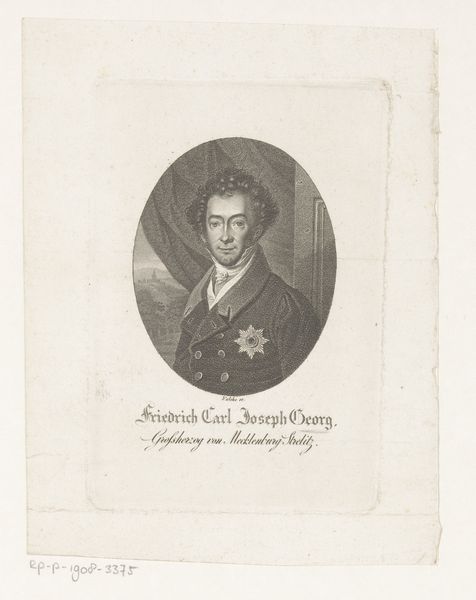
engraving
#
portrait
#
neoclacissism
#
history-painting
#
engraving
Dimensions: height 181 mm, width 114 mm
Copyright: Rijks Museum: Open Domain
Editor: So, here we have a portrait, "Portret van Carl Philipp von Wrede," made sometime between 1796 and 1855 by Christian Ermer. It's an engraving, which gives it this crisp, almost severe feel. It's definitely a formal piece... But beyond that, I'm a little stuck. What strikes you about this work? Curator: Oh, it whispers stories, doesn't it? The crispness you mention is the cool reserve of neoclassicism, the art of reason and order bubbling up after revolution. This chap, von Wrede, he seems determined to present himself as unshakably solid, but the engraver's burin captures a hint of vulnerability around his eyes, don't you think? As if the weight of his titles – *Königlich Bayerischer Feldmarschall und Kriegs-Minister*, quite a mouthful! – presses down on him just a bit. He's literally wearing his status, but how does it *feel*? Does that make sense? Editor: I see what you mean about the eyes, now that you mention it! It's like, he's playing a role, but we glimpse the person underneath for a split second. Is that why he's framed in the oval, sort of separated from the world? Curator: Precisely! That oval is both enshrining and isolating. A Roman emperor on a coin. He's both present and abstracted, real and idealized. Ermer wasn’t just depicting a face; he was etching an idea of power onto paper. Tell me, does knowing all that change the way *you* see him? Editor: Absolutely! I went from thinking "stuffy portrait" to seeing a real person wrestling with the image they need to project. Wow, it is amazing all of the context that one image contains. Curator: Isn't it just brilliant when a portrait, seemingly fixed in time, can still spark a lively debate with us centuries later?
Comments
No comments
Be the first to comment and join the conversation on the ultimate creative platform.

